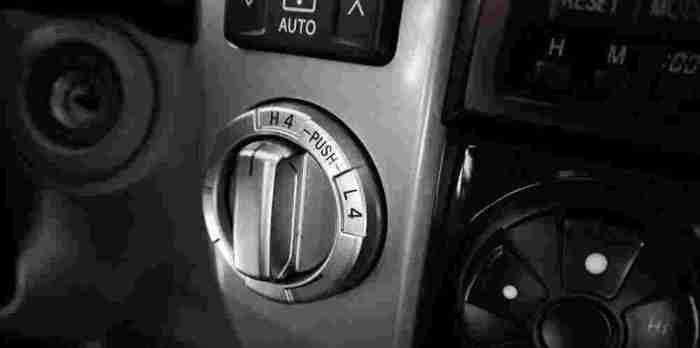How to Keep Your Toyota 4Runner Running Like New – The Toyota 4Runner, known for its rugged reliability and off-road prowess, can provide years of dependable service. However, like any vehicle, proper maintenance is crucial to ensuring its longevity and performance. This comprehensive guide details how to keep your 4Runner running smoothly, maximizing its lifespan and minimizing costly repairs. We’ll cover everything from routine maintenance to addressing specific issues, ensuring your 4Runner remains a reliable companion on and off the road.
Regular Maintenance: The Foundation of a Long-Lasting 4Runner
Regular maintenance is the cornerstone of keeping your Toyota 4Runner in top condition. This preventative care significantly reduces the likelihood of major mechanical failures and extends the vehicle’s overall lifespan. Sticking to a regular schedule, as Artikeld in your owner’s manual, is key.
Oil Changes: The Life Blood of Your Engine
Regular oil changes are paramount. The frequency depends on your driving habits and the type of oil used (conventional, synthetic blend, or full synthetic). Consult your owner’s manual for the recommended interval, but generally, changes every 5,000 to 7,500 miles for conventional oil and every 7,500 to 10,000 miles for synthetic oil are a good starting point. Using the correct oil viscosity (weight) is also crucial; again, refer to your owner’s manual.
Don’t forget to change the oil filter simultaneously.
Fluid Checks and Top-Ups: Staying Hydrated, How to Keep Your Toyota 4Runner Running Like New
Regularly check and top off essential fluids: coolant, brake fluid, power steering fluid, and transmission fluid (automatic or manual, as applicable). Low fluid levels can lead to overheating, brake failure, or transmission problems. Use the correct type of fluid specified in your owner’s manual. Inspect for leaks as well.
Tire Care: Maintaining Traction and Safety
Proper tire care is crucial for safety and handling. Check tire pressure regularly (at least monthly) using a reliable gauge, and inflate to the recommended pressure listed on the sticker inside your driver’s side doorjamb or your owner’s manual. Rotate your tires every 5,000 to 7,500 miles to ensure even wear. Inspect your tires for wear and tear, and replace them when necessary.
Consider investing in all-terrain tires if you frequently drive off-road. Proper tire rotation is vital for extending tire life and preventing uneven wear, a common issue with 4Runners.
Brake System Inspection: Stopping Power
Your braking system is critical. Have your brake pads and rotors inspected regularly. Listen for any squealing or grinding noises, which indicate worn pads. Brake fluid should be flushed and replaced according to your owner’s manual schedule. Ignoring brake issues can lead to dangerous situations.

Source: fourwheeltrends.com
Filter Replacements: Clean Air and Fuel
Replace your air filter and cabin air filter regularly. A clogged air filter restricts airflow to the engine, reducing performance and fuel efficiency. A dirty cabin air filter can affect the quality of the air inside your vehicle. Consult your owner’s manual for replacement intervals. Fuel filter replacement is also important and should be done according to the manufacturer’s recommendations.
Addressing Specific 4Runner Issues
While regular maintenance is key, specific issues may arise with your 4Runner. Understanding common problems and how to address them proactively can save you time and money.
4Runner Suspension System: Off-Road Considerations
The 4Runner’s suspension system is vital for its off-road capabilities. Regularly inspect the shocks, struts, and other suspension components for damage or wear. Off-roading puts extra stress on these parts, so more frequent inspections are recommended if you frequently use your 4Runner for off-road adventures. Consider upgrading to heavier-duty components if you frequently tackle challenging terrain.
Transmission Issues: Smooth Shifting
Transmission problems can be costly. Regular fluid changes are essential, but if you notice slipping, rough shifting, or unusual noises, address the issue promptly. A professional inspection is recommended to diagnose and resolve transmission problems.
Electrical System: Lights, Signals, and More
The 4Runner’s electrical system can be complex. Regularly check all lights, turn signals, and other electrical components. Address any issues promptly to prevent more extensive problems. Consider having a professional inspect your electrical system if you experience recurring problems.
Toyota 4Runner Specific Maintenance Tips: How To Keep Your Toyota 4Runner Running Like New
Beyond standard maintenance, some specific tips can enhance your 4Runner’s longevity.
- Use high-quality parts: Investing in genuine Toyota parts or high-quality aftermarket equivalents can ensure better performance and longer lifespan.
- Regularly wash and wax your 4Runner: This protects the paint and prevents rust.
- Inspect your belts and hoses regularly: Cracked or worn belts and hoses can lead to serious engine problems.
- Address any unusual noises or vibrations promptly: These can be early indicators of more significant issues.
- Keep your 4Runner’s undercarriage clean: This helps prevent rust and corrosion, particularly important in areas with harsh winters.
Frequently Asked Questions (FAQ)
- Q: How often should I rotate my tires? A: Generally, every 5,000 to 7,500 miles, but check your owner’s manual for specific recommendations.
- Q: What type of oil should I use in my 4Runner? A: Refer to your owner’s manual for the recommended oil viscosity and type (conventional, synthetic blend, or full synthetic).
- Q: How often should I change my air filter? A: Consult your owner’s manual; it typically ranges from 12,000 to 15,000 miles.
- Q: What are the signs of a failing transmission? A: Slipping gears, rough shifting, unusual noises, and difficulty shifting are all potential indicators.
- Q: How can I prevent rust on my 4Runner? A: Regular washing, waxing, and undercarriage cleaning are crucial, especially in areas with harsh winters.
Resources
- Toyota Official Website
- YourMechanic (for finding local mechanics)
- 4Runner Forums and Communities (for user experiences and advice)
Conclusion
Keeping your Toyota 4Runner running like new requires consistent effort and attention to detail. By following this comprehensive guide and adhering to a regular maintenance schedule, you can significantly extend the life of your vehicle and enjoy its rugged reliability for years to come. Remember, preventative maintenance is far more cost-effective than addressing major repairs later on.
Call to Action
Schedule your next 4Runner service appointment today and keep your adventure vehicle in peak condition!
Popular Questions
What type of oil should I use in my Toyota 4Runner?
Consult your owner’s manual for the recommended oil type and viscosity for your specific year and model.
How often should I rotate my tires?
Tire rotation frequency is typically every 5,000-8,000 miles, but check your owner’s manual for the recommended schedule.
When should I replace my brake pads?
Brake pad replacement is needed when they wear down to a certain thickness. Have your brakes inspected regularly by a mechanic.

Source: shopify.com
What are the signs of a failing transmission?

Source: offroadguidance.com
Signs include slipping gears, harsh shifting, unusual noises, and leaks. Professional inspection is necessary for diagnosis.
